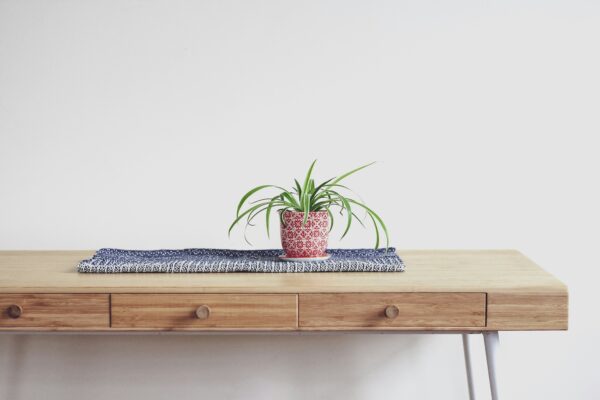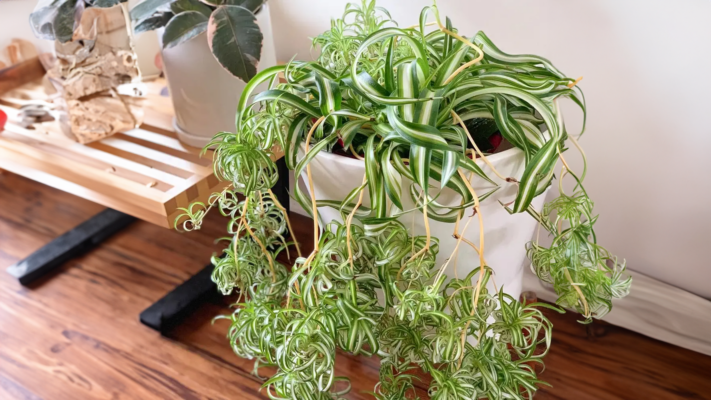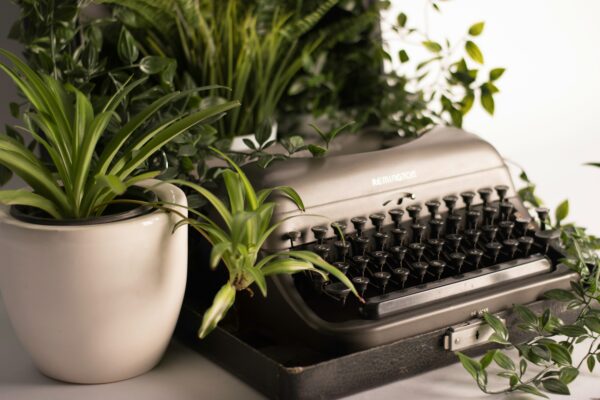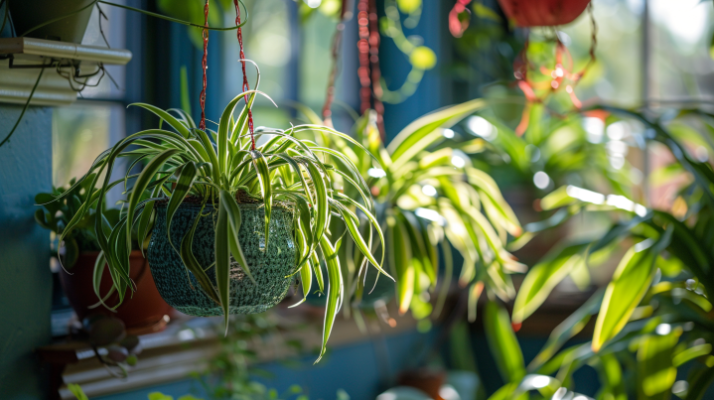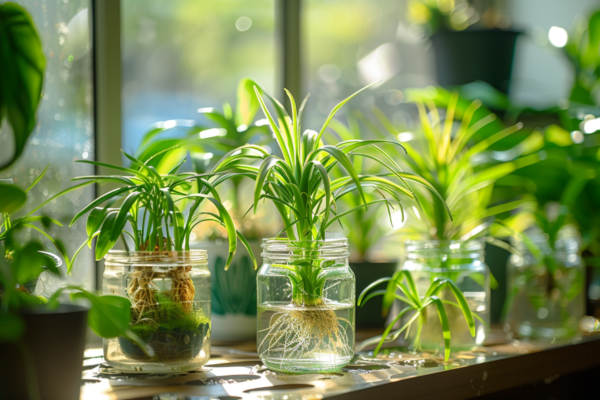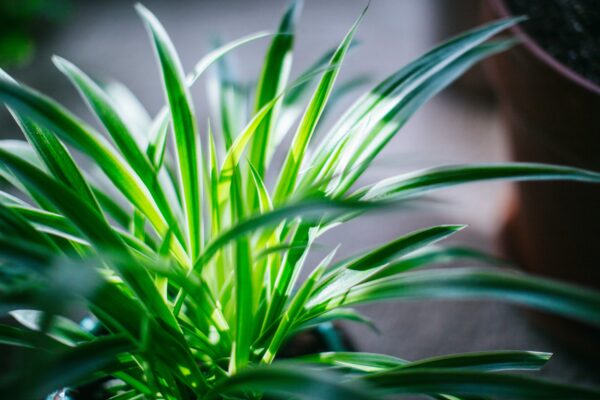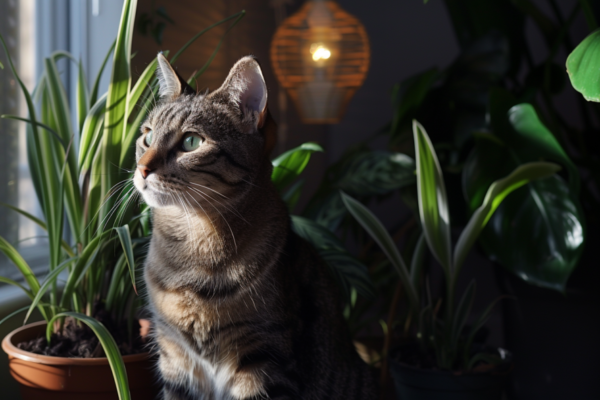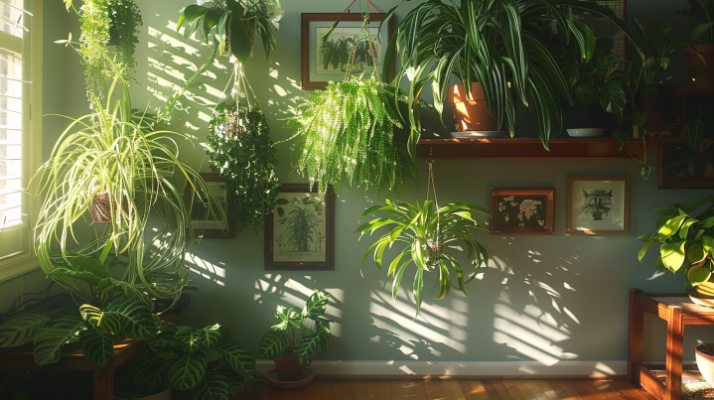When it comes to finding the perfect low-maintenance greenery for your home, the Spider Plant (Chlorophytum comosum) is a standout choice. Known for its resilience, adaptability, and aesthetic appeal, it has earned its place as a top favorite among easy-care houseplants. Whether you’re a seasoned plant enthusiast or a beginner seeking effortless growth, the Spider Plant is the ultimate companion for your indoor garden.
Introducing the Effortless Spider Plant: A Champion of Easy-Care Houseplants
Spider Plant’s Adaptability: A Plant for Every Home
One of the most impressive traits of the Spider Plant is its adaptability. It thrives in various environments, making it ideal for different lighting conditions, from bright, indirect light to lower-light corners. Whether placed in hanging baskets, shelves, or terrariums, Spider Plants blend seamlessly into any room.
Spider Plant’s Resilience: A Low-Maintenance Marvel
If you’re busy or new to plant care, you’ll appreciate how resilient the Spider Plant can be. This low-maintenance plant requires minimal care to flourish. It’s known for its ability to bounce back even if neglected, making it a beginner-friendly favorite.
Spider Plant’s Aesthetic Appeal: A Touch of Greenery
The lush, vibrant foliage and trailing spiderettes give the Spider Plant a striking visual appeal. The variegated leaves add texture and color to your indoor space, creating a fresh and lively atmosphere. Their cascading growth habit makes them perfect for hanging baskets and plant shelves.
Effortless Spider Plant Care: Simple Steps for Success
Providing the Perfect Light: Finding the Right Balance
Spider Plants thrive in bright, indirect light but can tolerate lower light conditions. Place them near a window where they receive filtered sunlight for a few hours each day. Direct sunlight can scorch the leaves, so a balance is key.
Mastering the Art of Watering: Finding the Golden Mean
While Spider Plants enjoy consistent moisture, overwatering can lead to root rot. Water your plant thoroughly and allow the top inch of soil to dry out before watering again. Yellow leaves often indicate overwatering, while browning tips suggest underwatering or excess fluoride.
Nourishing for Optimal Growth: Essential Nutrients for Spider Plants
Fertilize your Spider Plant monthly during the growing season (spring and summer) with a balanced liquid fertilizer. Avoid over-fertilizing, as it may lead to burned leaf tips.
Addressing Common Spider Plant Problems: Troubleshooting for Healthy Growth
- Yellow Leaves: Caused by overwatering.
- Browning Tips: Could be due to underwatering, excess fluoride in tap water, or low humidity.
- Pest Issues: Spider Plants are relatively pest-free but may occasionally attract aphids, mealybugs, or spider mites. Treat pests with insecticidal soap or neem oil.
Choosing the Perfect Pot and Soil: Creating an Ideal Home for Your Spider Plant
Select a pot with drainage holes and use a well-draining potting mix. Repot your plant every 1-2 years to refresh the soil and accommodate growth.
Embracing the Versatility: Decorating with Spider Plants in Style
Spider Plants add flair to any room with their trailing leaves and spiderettes. Create a hanging garden, place them on shelves, or arrange them in terrariums for a unique look.
Propagating Spider Plants: Expanding Your Greenery with Ease
Dividing for Abundant Growth: Creating New Spider Plant Offspring
Divide mature Spider Plants by gently separating their roots into smaller clumps. Plant each division into a new pot with fresh soil for instant new growth.
Water Propagation: A Simple and Effective Technique
Propagate the spiderettes by placing them in water until they develop roots. Once rooted, transfer them to soil, and watch them flourish.
Sharing the Joy: Gifting Spider Plants to Friends and Family
Spider Plants make excellent gifts! Share your propagated plants with friends and family to spread the joy of indoor gardening.


